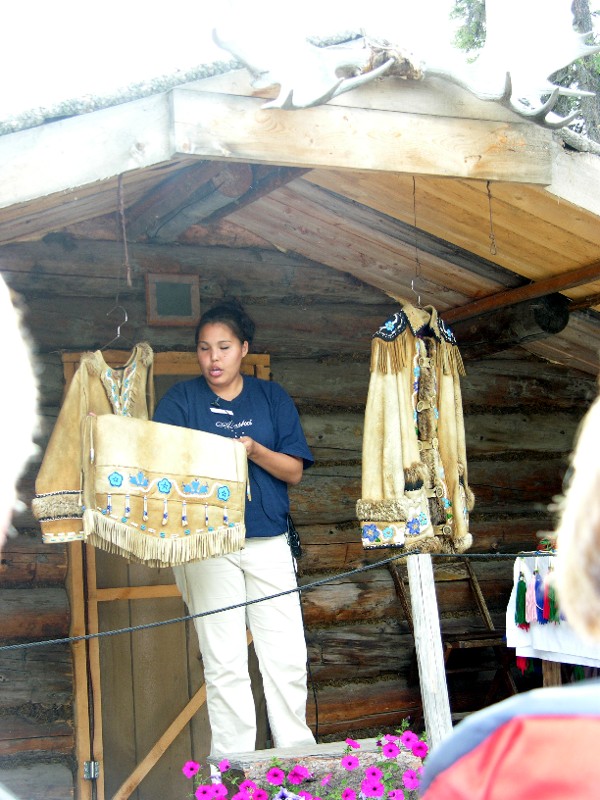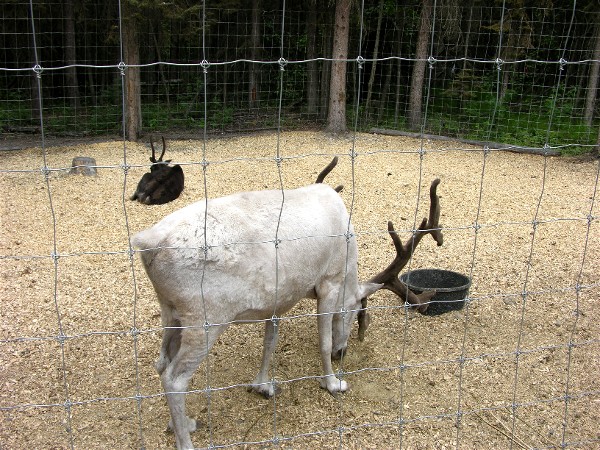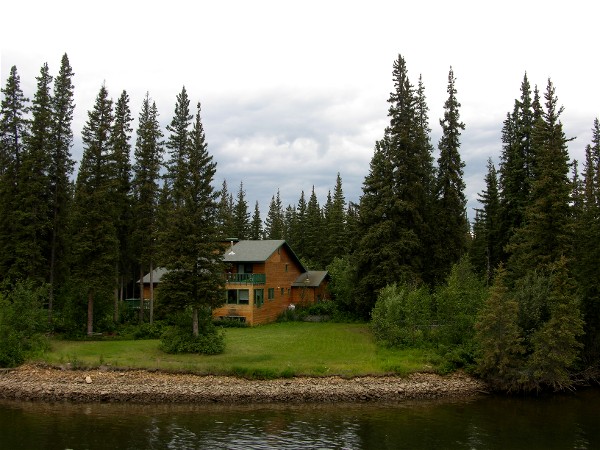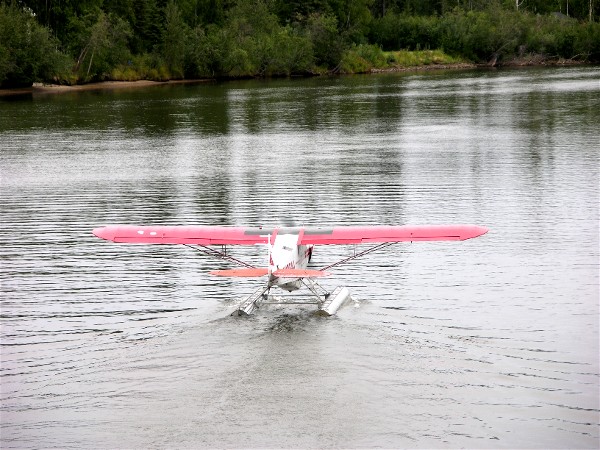
Now we came to their "Chena Indian Village" and got off the ship. The place was to show us how the Athabascans lived. Our ship was broken into large groups and we started by going to Dixie Alexander's cabin to learn about the outfits she makes. Here is the sod roof of the house, it doesn't rain much here so the plants absorb the water and do not rot the roof:

A demonstration of Dixie Alexander's work, some of which is in the Smithsonian in Washington, DC. Dixie was there to answer questions, but the girls from the ship, who are Athabascan, did most of the talking.

This outfit was hot in the 70s we were experiencing, it is for winter:

Next we met up with Jessie and her sled dogs, notice they are all kinds of colors:

Some of the large plants that grow where the sun shines a long time each day:

We next learned about how each animal was used by the Athabascans:

Then we were on our own for about twenty minutes.
The reindeer closer up.

A birch bark canoe, somewhat similar to what we saw at Old Fort William in Thunder Bay, ON.

Inside they showed how people lived after European influence.

We were especially happy to hear more from Jessie about the sled dogs. The dogs are "Alaskan Huskies" and they are not a breed through the AKC (American Kennel Club), in fact mushers do not like the AKC since all it cares about is looks so they inbreed too much. Siberian Huskies have now been bred for looks so much they are terrible sled dogs. Alaskan Huskies do not have hip problems, that is an inbreeding issue. Alaskan Huskies are marathon runners and are much smaller than we expected. Alaskan Huskies are too warm in the 70s, they would not do well in the lower 48. For strength and slower speeds a malamute team would work, but to go 1100 miles in nine days you need these smaller and much more energetic dogs. The sled dogs eat about 2000 calories a day in summer, 5000 in winter and 8-10000 during the race.
Then we got back on the ship for the return up the Chena river. Here are some of the houses on the way.


This is the house of the owners of the Discovery ships:

To sell their own smoked salmon they gave us all a taste. Good stuff, but $9 a can is a bit high. Talking to people on tours, many were not sure they were going to get another chance to buy smoked salmon so they were buying.
Now we get to see a seaplane take off and land, another Piper Supercub with platoons.

Quicktime video float plane, another Piper Supercub, taking off (1.58MB)
The float plane leaving to go home:

Then we docked again. Those on tour buses were going to have twenty minutes to do more shopping. We were glad we drove ourselves since we didn't need to buy tourist stuff and could leave.
The tour was very touristy, but worthwhile and we are glad we went.
A couple days after our tour Susan Butcher died from leukemia, which is very sad for us all, her family, and for everyone involved with the Discovery tours including those who have taken the tour.